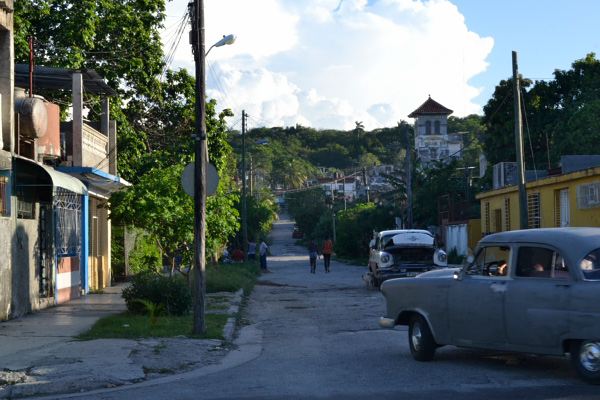Havana’s Neighborhood of Lawton
Photo Feature by Luis Enrique Gonzalez Muñoz
HAVANA TIMES — Havana’s neighborhood of Lawton is located approximately 6 kilometers from the city center, where the estate of Fernando Batista was once located. His secretary, surnamed Lawton, convinced Batista to sell his land to the railway company, states Cuba’s open on-line encyclopedia (EcuRed).
With the money made through this sale, Batista purchased the estates bordering with what is today B street, in an area that was rapidly urbanized thanks to the railway company. This process gained momentum with the construction of Porvenir and Dolores avenues in the 1940s.
Some buildings in the neighborhood, such as Los Castillitos, boasting roofs made of pointed tiles and stone walls, give the surroundings a touch of originality. Below are a number of photographs of the locality, situated in the municipality of 10 de Octubre.
Click on the thumbnails below to view all the photos in this gallery. On your PC or laptop, you can use the directional arrows on the keyboard to move within the gallery. On cell phones use the keys on the screen.































The Lawton Foundation for Human Rights is based in this neighbourhood of Cuba.
http://lawtonfoundation.com
The principles of the Lawton Foundation are:
1. We demand the unconditional freedom of the people of Cuba under a multiparty system of government democratically elected at all levels and with complete guarantee of freedom of expression for all, including the government’s detachment from the country’s media.
2. The repeal of the illegitimate communist constitution of 1976 and the establishment of a Sovereign Constitutional Assembly to draw amendments to the Democratic Constitution of 1940, including the absolute adhesion to the Universal Declaration of Human Rights of the United Nations and the abolition of the death penalty. These amendments should be ratified by the elected representatives.
3. The establishment of a state based on the rule of law that will guarantee equality to all citizens before the law, without discrimination based on race, sex, ethnic group, or religious beliefs and which will end the system of oppression and apartheid established under the communist regime.
4. The dissolution of all political, propagandistic, and repressive organizations created by the communist regime since January, 1959, with a renewed emphasis on the development of independent civic institutions that will forge democracy for the new society.
5. Unconditional and immediate amnesty for all political prisoners.
6. Free access to Cubans and their children, who live outside the country, to enter and cave the country at will, and enjoy the same citizenship rights as those who live inside the Country.
7. The commitment to fund a first-rate free educational system, without political orientation as well as a basic health system that can be afforded by the poorest ones.
8. The recognition of private property and free enterprise as the main pillars for boosting the country’s well-being along with a guarantee to workers of their right to organize independent labor unions that will promote their collective interests.
9. The restructuring of the armed forces and ensuring its strict separation from the economic and political activities and responsibilities of the country.
10. Once democracy has been established, lobby for the lifting of the United States commercial embargo and for the opening to foreign economic aid until Cuba can establish a basis for its economic recovery.